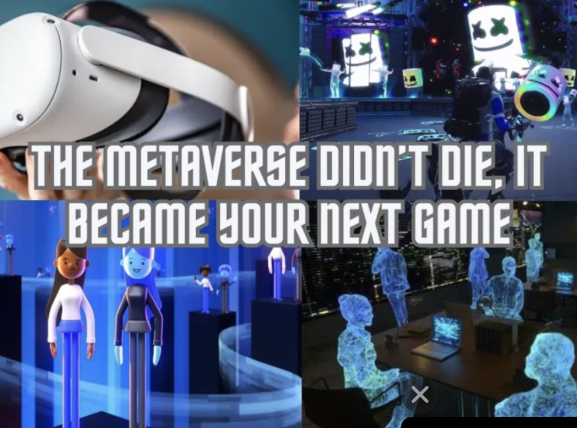Anime Is Eating The World
Anime – what started as a niche genre of manga and animation has become a multi-billion dollar industry in its own right, with chart-topping games like Pokémon Go and Genshin Impact grossing billions and movies like Demon Slayer: Kimetsu no Yaiba becoming one of the highest grossing films of the year. Anime is driving pop culture today; just look at the fashion collaborations like Loewe x Studio Ghibli or famous lyrics from artists like Chance the Rapper and The Weeknd. We estimate the total market size of anime to be north of $50B, once accounting for anime, comics, and games (data.ai, Precedence Research).
Yet, we believe that anime is just getting started – today, new technologies and business models are accelerating a once niche industry to even greater heights. Anime is where the future of creation and play is happening, whether with innovative games on our phones, user-created fanfictions and games, roleplaying as the characters themselves, or interactions with AI-versions of these fictional beings. We believe that anime will become one of the dominant formats through which we consume and engage with content.
The usual lifecycle of an anime fan looks something like this: they are introduced to the format with great IP – the Attack on Titan anime or the One Piece live action show or one of the miHoYo games. They then deepen their fandom through new forms of social and creative engagement (UGC, VTubing, community formation, cosplay, etc.). What we’re most excited about is how anime engagement has evolved from passive to interactive over the last few years. This has happened along a few different axes:
- AI companions, an evolution of classic visual novels, are the most popular for anime characters and IP. They are quickly becoming one of the dominant forms of roleplay.
- UGC platforms (user-generated content) such as Roblox allow anime fans to create their own renditions of popular anime games much more easily than ever before. Fans can express their creativity with play that they define themselves.
- Anime studios are adopting new AI technologies to create content faster and more cost effectively, but they are also iterating on new core loops with AI-native character interactions.
- VTubing has transformed the way millions of anime fans interact with their favorite characters in new social and parasocial relationships by allowing any fan to roleplay as the characters themselves.
Ready to dive in? Let’s jam.
A Quick History of Anime
Anime is a genre of animation that originated from Japan and is known for its distinctive art style: bright colorful graphics, strong outlines, large, exaggerated eyes and features, and brightly colored hair. It originated in the early 1900s with visual strips, but really started becoming more popular in the 60s and 70s with shows like Astro Boy, Lupin III, Akira, Mobile Suit Gundam, and of course, Hayao Miyazaki’s works at Studio Ghibli. Anime entered the mainstream in the 2000s with popular shounen anime like Naruto, One Piece, and now Attack on Titan. You might see football players referencing the Attack on Titan salute as a celebration, or pop culture memes all around the internet.
Nowadays anime is more popular than ever: Crunchyroll estimated that viewership doubled between 2020-2022 alone to over 300M fans worldwide. Netflix reported in 2022 that over half of its subscribers worldwide watched some anime content on its platform. The top 4 Discord servers worldwide are all anime-related. Anime is also a medium that caters to many different audience types, from mature seinen anime like Monster to classic action shounen like Demon Slayer or Naruto, from female-oriented shoujo like Ouran High School Club to contemplative slice of life stories like Mushi-shi. Because of this broad appeal, there’s a huge community of diverse fans that have engaged with the medium over many years and developed strong affinity toward IP and characters. This affinity has led to one of the most popular use cases of AI recently – AI waifus and husbandos.
The Rise of AI Waifus / Husbandos
First, to explain popular slang – what is a waifu or husbando? Waifus / husbandos are fictionalized girls and guys who viewers feel some level of emotional or romantic attachment to. This isn’t as rare of an occurrence as one might think; Polygon reported that 44% of surveyed anime viewers reported developing a crush on an anime character. “The other 56% are lying,” the report jokes. After all, anime fans tend to express their fandom deeply through merch, fanart, conventions, cosplay, and other means (66% make some form of fan art according to fandom). So it’s not surprising that they would also develop a deep attachment to the characters. Anime Expo in LA for instance, routinely attracts hundreds of thousands of fans each year, the a16z team included.
Waifu / husbando culture derives from visual novels, and AI companions are the logical extension of these animated storybook games. Originally, visual novels were serialized books with anime-styled pictures in between. But now the term colloquially refers to the digital version in which the player has agency, with branching storylines where you roleplay as the main character, advancing through the plot and choosing to romance other male/female characters. This is a relatively niche market (~$150M according to some sources), but one that has an outsized impact on the industry. For example, Fate/Grand Order, one of the most successful gacha games with $5B+ cumulative revenue, is descended from a visual novel called Fate/Stay Night.
The structure of the visual novel with branching dialogue trees is a precursor to modern AI companions today. While there are many practical use cases for AI-simulated human interactions – AI as therapist, as teacher, as assistant, etc. – one of the most popular realizations are as friends and romantic companions (more on the broader companion space from my colleagues here). For instance, character.ai’s top characters are all from Genshin Impact; Raiden, Yae Miko, and Hu Tao take some of the top spots at 390M, 202M, and 113M messages respectively as of the time of this blog, compared to Elon Musk at a mere 40M messages. Other top characters are Gojo Satoru (638M) from popular shounen Jujutsu Kaisen and Levi Ackerman (250M) from Attack on Titan.
Many of the top companion sites like janitorai, chub.ai, or spicychat.ai also feature anime companions – ranging from roleplay with school bullies to overprotective sisters to… furries? – as some of their top personalities. There are also vertically specific companion apps for anime: crushon.ai is an 18+ example, talkieai is relatively safe-for-work, while Hyper includes VTuber-esque live facial elements. There’s moemate which allows you to bring the companions cross-browser and play games like chess and checkers, and kajiwoto that allows you to more deeply customize your prompts and datasets and share them on server.
AI is deepening the previously parasocial relationships we had with our favorite anime characters from passive linear media, into powerful new, interactive relationships. The reason why anime is so resonant as a genre for AI companions is because character affinity / romance is already built into many of the best anime stories. The majority of top anime games and visual novels are role playing games that feature a romance mechanic, and so it’s natural for fans to want to deepen their connection to their favorite IP and characters through active interactions.
As AI advances, the interactions will become non-scripted and more multi-modal: we’ll interact with our companions through voice and text, their animations and reactions will be generated in real time, we’ll be able to play games with them, and they’ll have longer context windows to remember our shared history together. We’re already seeing startups pushing the boundaries for how we interact with content. Sekai is using AI to create short, bite-sized videos of you and anime characters in fanfiction-esque scenarios. Meanwhile, there are several stealth studios that are building otome games in the vein of Love and Deep Space ($200m+ annualized revenue, SensorTower), but where the side quests, dates, and interaction texts in the game are AI-generated.
UGC Democratizes Creation for Anime Fans
Anime is the new playground for content creation. Fans often engage with anime IP by creating their own versions of art, novels, and games, and innovation is happening across the stack. There’s Nijijourney for art, NovelAI for fanfiction, pixivFANBOX for creator support, and UGC-platforms for games. For instance, several of the top Roblox games are based on IP like One Piece or One Punch Man, and for a platform with over 60M DAU and 300M MAU, this is a very broad player base of anime fans. In particular, Roblox is a good proxy for what’s trending with the younger generation given its demographic skews towards kids and teens. Similar to how AI companions give fans a new way to interact with IP, UGC allows them to reimagine and remix their favorite IP in wholly new contexts.
Blox Fruits, the second most popular Roblox game by active users with 40B+ visits, is based off of One Piece, where players can choose to roleplay as a Marine or Pirate, fight enemies, improve their characters, and obtain special abilities through devil/blox fruits and Haki. The Strongest Battlegrounds, the fourth most popular Roblox game with 7B+ visits, is based on One Punch Man where you can assume the role of different heroes that have special abilities and combos to fight other players. And in Minecraft, many of the most popular servers that players frequent are based on Pokemon or Naruto.
There are a few notable reasons for the popularity of these games. The first is that there’s clear player demand against a shortage of high quality anime IP games; one example is Palworld’s recent success as the “Pokemon with guns” game, selling over 25M copies in a month across Steam and Xbox Game Pass. The second reason is that the anime IP licensing landscape is notoriously difficult to navigate for developers, creating a potential undersupply of games. Besides the language and cultural barrier, IP may be owned by different parties for different regions and different formats (movie, game, manga, etc.). Large aggregators like Crunchyroll and Funimation may already own exclusive licenses for certain IPs altogether. Some startups like Kasagi Labo, Layer, and Story Protocol are tackling this issue to make IP more democratized and easier to access.
We believe that as new AI tools emerge and existing UGC platforms embrace AI, we’ll see the barriers to creation drop and the release of even more fan-created transmedia content. Roblox has already incorporated AI into user workflows, and Google’s DeepMind team recently announced Genie which can convert prompts into 2D playable environments. The Tencent team also recently unveiled GameGen-O which pushes the boundaries for generated open world games like Genshin Impact.
Beyond UGC platforms, AI models and tools are enabling first-time creators to make compelling anime content that previously would only have been possible with a team of professionals. For art, Nijijourney is an image diffusion model focused on generating high-quality anime images from text, a collaboration between Spellbrush and Midjourney. There are also various fine-tuned Stable Diffusion models (a few here hosted on citiv.ai) that capture different styles and poses, some trained on SD 1.5, others like Animagine XL V3 on SDXL 1.0. Yodayo integrates AI generated anime art and character chatbots together, and pixai.art contains models that mimic popular IP (Genshin, Pokemon, Blue Archive, etc.).
For animations and video there are several options available for the aspiring creator. RunwayML, Luma Labs, Hedra, and PikaLabs have built foundation models for text-to-video generation. One can use domoAI for anime-specific polish, and MagnificAI and Topaz Labs to enhance images and image-to-video prompts. ElevenLabs is used for voiceovers and dubs, and Udio and Suno are used for music. For manga/comics, there are companies like Shortbread that are helping to create webcomics and manga more seamlessly, with context and consistency between scenes and shots. There’s still a way to go to improve model accuracy, speed, and cost, but it’s clear that as these tools evolve they will empower more creators that might previously have lacked technical or artistic skills to bring their anime ideas to life.
Anime Game Studios Lead the Way
On the other side of the spectrum, professional game studios are leading the charge for high production-value consumer experiences that build on or create new IP. Anime games are some of the highest grossing in the games industry, accounting for 20% of spend on the mobile app store despite only having usage penetration of <3%. For example, Monster Strike has out-earned Candy Crush ($7.6B cumulative revenue vs. $6.9B) on a much smaller player base of 10M MAU vs. Candy Crush’s 70M+ MAU (SensorTower, 2016-19). Meanwhile, miHoYo’s Genshin Impact is on track to be one of the highest earning games of all time at its current trajectory (see below), with nearly $4B earned since launching just over three years ago.
There are two ways that anime game studios broaden the horizon for players. First, they usually create the highest quality games of the most popular IPs like Dragon Ball, Pokemon, or Dragon Quest. Six of the top 10 highest grossing anime games are based on existing IP, allowing fans to interact directly with the characters themselves. Second, they often innovate on core game loops or technology: miHoYo’s Genshin Impact was one of the first true cross-platform anime games, GungHo’s Puzzles & Dragons mixed match-3 and RPG mechanics for the first time, and Riot’s Valorant was one of the most accessible entries into tactical first person shooters. There are also several stealth startups experimenting with weaving LLMs into visual novel gameplay.
So, what makes these games so compelling and why do they make so much money? We theorize that there are a few key components that contribute to their success:
- Proven, better, new. A lot of the games that have become breakout hits like Pokemon Go, Genshin Impact, or Puzzle & Dragons combine familiar systems with some form of unique gameplay innovation. For Pokemon it was the unique location-based game system combined with being the first Pokemon game on the mobile platform and for Genshin it was combining the open world gameplay of Zelda with the RPG elements of a traditional gacha and true cross-platform play. However, for many games, the bulk of many systems will be borrowed from the existing status quo and best-in-class from other games: banner-based live ops and events, gacha monetization, power creep and player progression, character personality archetypes like tsunderes, etc.
- RPG at its core. Almost all the highest grossing games this year were role-playing games (RPGs). In this genre, players have one, or multiple characters that they “role-play” as by leveling them up, fighting monsters, equipping items, changing builds, etc. This isn’t surprising given that RPGs make up the highest spend for all mobile games (31%) despite having some of the lowest downloads by genre (3%). They are simply very deep games that the most hardcore gamers tend to gravitate towards, and can monetize well through pay for power or gacha.
- Strong / compelling IP. It’s not an accident that six of the top ten anime games license popular IP for their titles. In anime games, because character collection is a primary driver of gameplay and monetization, IP is very important to drive that core motivation. Story matters.
- Gacha monetization. Gacha games have some of the highest average revenue per user (ARPU) in the industry and is a reason why Japan has some of the highest ARPU by country. Gacha traces its history back to gachapon, Japanese toy machines that dispense a random toy each time you put in a coin. The modern equivalent would be trading card packs such as in FIFA Ultimate Team. There is some controversy over this monetization practice, but more recent games have raised S-tier earn rates, added pity drops, and increased the drip of premium currency to balance out monetization and fun.
For now, we’ve been covering mostly free-to-play (F2P) mobile games. However, there are several successful PC/console anime games as well: Doki Doki Literature Club, the Persona series, the Final Fantasy series, the Fire Emblem series, and Phoenix Wright, just to name a few. Many of these game franchises have been sold quite successfully through a premium business model. For instance, the Final Fantasy VII remake was one of the most anticipated in the series, and sold over 3.5M copies in the first 3 days. After three years, it’s now sold over 7 million copies total.
There are several startups that have taken up the mantle in the West to build anime games for a global audience, and we’re excited to see what kinds of new experiences they create for players. Odyssey Interactive is building competitive multiplayer PvP games like Omega Strikers. Pahdo Labs is building a UGC platform starting with the anime game Starlight Re:Volver. Believer is building an open world drawing on inspiration from Genshin Impact. Studio Sai has made a hybrid dating action game, while Starmi and Gaudium are both creating collectible hero gacha action games. These are just a few of the studios that are focused on realizing anime worlds for players. We believe that these studios will continue to push the boundaries of gameplay and technology, and we’re excited to see these new experiences come to fruition.
VTubing Blurs Human-Digital Interactions
We’ve seen how AI companions, UGC, and games allow players different ways of interacting with popular anime IP. VTubing takes it to the next level where fans can become popular anime characters themselves. VTuber stands for “Virtual YouTuber” and refers to a content creator who overlays an anime facial / body rig that tracks their real time motion and projects a digital avatar onto the stream (e.g. Kizuna AI). This phenomenon likely spawned from virtual idols such as Hatsune Miku that exist as fully digital characters, similar to virtual influencers like Lil Miquela in the west. There are various things that VTubers will do on stream, usually a mix of singing, chatting, dancing, and gaming. It allows for the creator to adopt a different personality, and makes it easier to create content regardless of appearance or age.
Today, VTubing is a relatively small but fast-growing community that has potential to ride the anime wave into a much larger segment of content viewership and creation. While VTubers only represent 0.4% of all streamers on Twitch, they represent 5.7% of total viewership. And in the first half of 2023, VTubing viewership rose by 28% despite overall Twitch views staying flat. Some of the top VTubers like Ironmouse have millions of viewers, and are professionally run by organizations like VShojo or Hololive. One day, VTubing could become just as ubiquitous as Memojis on Apple FaceTime or Snapchat filters.
Startups are tackling this market from a few different angles. Iron Vertex is the go to for professional rigs done by designers experienced in Live2D, but if you need a cheaper option, startups like Hyperonline or GoHibe are making it easier than ever to design your own avatar. Mtion.tv meanwhile helps users design the background and environment for their avatar with visual based programming. There’s also VTubers like Neuro-sama, which is an AI that represents a human VTubing streamer, and platforms that are native to the VTuber experience like Anilive. If anime companions represent the human-digital relationship and multiplayer games the human-to-human relationship, then VTubing sits in the middle as a unique parasocial relationship mixing digital and human interactions.
A16z







